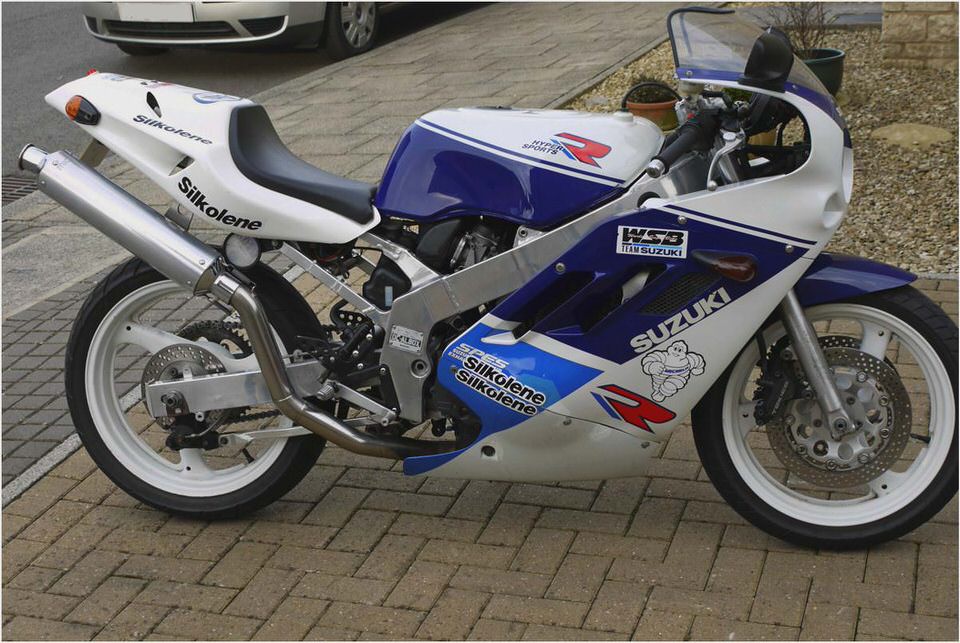
146-1106-12-z+first-ride+on-the-track.jpg
What a difference a year can make, especially if you’re Suzuki. After all, it was little more than a year ago that the Japanese manufacturer’s U.S. subsidiary announced it wouldn’t import any 2010 streetbike models into America—the iconic GSX-R models included. The marketing ploy seemed risky, but was deemed necessary by American Suzuki, which noted that U.S. dealerships were practically up to their necks in unsold ’09 units.
Now, just a little over a year later, Suzuki is back strong as ever in the American market with two completely redesigned machines—the GSX-R600 and GSX-R750, two models that prove Suzuki engineers weren’t just twiddling their thumbs over the last year or so.
At first glance, the new models are strikingly similar to their predecessors. In fact, aside from the glaring new Showa fork and Brembo front brake calipers, one would assume that little has been done to the GSX-R600 and its slightly-larger-displacement sibling. The opposite is true however, and a quick look over each model’s spec sheet will prove just that.
The biggest change you ask? Well, it’s something that both models actually lost in their latest overhaul—excess weight.
No Stone Left Unturned
As was the case in 2006, when the GSX-R600 and GSX-R750 last received a true redesign, Suzuki made a number of modifications to the engine and chassis of each 2011 model. However, because the 750 has no direct competition, it received slightly less attention than the 600, which for 2011 has a number of engine revisions and, quite frankly, could take the middleweight category by storm this year.
With a claimed curb weight of 419 pounds, the 2011 GSX-R750 is roughly 18 pounds lighter than its forerunner. Not to be outdone however is the GSX-R600, which with a claimed curb weight of 412 pounds, is almost 20 pounds lighter than its 2010 predecessor. The majority of the weight loss is spread throughout the bike, but a large chunk of it comes from the revised body panels.
And outward appearance may look the same, but by using fewer, thinner panels and less hardware, Suzuki was able to cut a staggering eight pounds. Additionally, to match the shorter wheelbase (more on that later), the front cowl is 55mm shorter and the tail section is 35mm shorter. Fitted up front is a new vertically stacked headlight that in itself is one pound lighter.
And while weight loss was an extremely important factor, Suzuki engineers had more goals in mind during this latest redesign; they also looked to improve handling characteristics, and enhance low-end and midrange power by lowering reciprocating mass and reducing frictional losses.
That in mind, the engineers redesigned the pistons of the 599cc oversquare engine, which now feature shorter and narrower skirts and are a claimed 14-percent lighter than those of the previous model. Matched to the newly designed pistons are connecting rods that Suzuki claims to be 12 percent lighter.
Also new for the 2011 GSX-R600 is the six-and-a-half-ounce-lighter, vertically staggered close-ratio six-speed transmission that features a taller first gear ratio and shorter ratios for second, third, fourth and sixth gear. The intent behind this was to not only improve straight-line acceleration from a stop (a benefit on the street), but also acceleration out of corners (a benefit on both the street and on the track).
As far as numbers are concerned, the GSX-R600 retains the same bore and stroke, but compression has been bumped from 12.8:1 to 12.9:1. And while the aforementioned engine revisions were limited to just the 600, a handful of additional alterations were made to both it and its larger-displacement kin.
The primary change to both engines is the pentagonal-shaped cutouts in the side of each cylinder bore that replace the conventional round ventilation holes and are said to permit easier and quicker airflow between cylinders.
Also revised internally on both the GSX-R600 and GSX-R750 are the primary injectors, which are redesigned for 2011 and are installed at a 35-degree angle as opposed to a 41-degree angle on the 2010 models. The intended result is a more direct spray towards the intake valves and improved throttle response. With the intention of improving low and midrange torque, camshaft profiles on both the GSX-R600 and GSX-R750 have been redesigned to offer reduced overlap and maximum lift.
Furthermore, in an attempt to shorten and simplify both GSX-R models’ wire harnesses, Suzuki engineers relocated the ECM from under the seat to the front of the airbox. As a result of this change, throttle body shape and height has been changed.
Still controlled by the ECM is the Suzuki Drive Mode Selector (S-DMS), which like the 2010 model regulates fuel injection, the secondary throttle valve and ignition system. Unlike the 2010 model however, the 2011 GSX-R600 and 750 offer just two modes—not three—since according to Suzuki, many riders felt the third mode was rather unnecessary. For 2011, both GSX-R models now run the mode switch on the left-side switch gear since it is easier to manage with your left hand than your throttle hand.
In the name of weight loss, the now typical four-into-one stainless steel exhaust system with under-engine exhaust chamber was also modified. The exhaust still hosts a servo-controlled butterfly valve, but now features thinner pipe walls, a smaller exhaust chamber and smaller muffler design. The result is an almost four-pound-lighter unit for the GSX-R600 and three-pound-lighter unit for the GSX-R750.
By rotating the engine rearward by three degrees, Suzuki engineers were also able to further revise the GSX-R600 and GSX-R750 chassis; the biggest change being to the bikes’ overall wheelbase, which is now 15mm shorter than the 2010 model. Changes in size and shape of the main spar casting and relocated connecting welds have lent to a three-pound-lighter frame. Despite the altered wheelbase, swingarm length remains the same.
But by composing the arm of just three pieces as opposed to five, Suzuki engineers were able to reduce swingarm weight by an additional two pounds. According to the Japanese manufacturer, an added bonus of the GSX-Rs’ shorter wheelbase is sharper handling through mass centralization and a shorter reach between the seat and handlebar.
While the ergonomics are slightly altered by the different geometry, the biggest difference comes from the handlebars, which have been angled out one degree, and from the fuel tank, which has been shortened and reshaped to allow more room for the rider. Like the 2010 models, the 2011 GSX-R models feature three-way adjustable footrests.
Perhaps the most notable addition to the 2011 models is the Showa Big Piston Fork and Brembo monobloc calipers. The radial-mount four-piston calipers up front clamp to 310mm discs, are lighter, and their increased piston sizes are intended to provide more consistent power and a better feel at the lever. The 41mm fork, which has finally been passed down from the GSX-R1000, is aimed to provide more feedback and more precise damping performance.
Various other changes made with weight loss in mind include the narrower front and rear axles, redesigned cast aluminum wheels and upgraded rear brake caliper, which now clamps onto a 220mm disc.
New Bikes, Same Slogan
For 2011, American Suzuki treated press to a day at Barber Motorsports Park, a 2.3-mile tight, technical track that would ultimately test both machines. And while there are few long straights at Barber to really stretch the legs of either GSX-R (especially the 750), the elevation changes, sweeping corners and hard braking zones are great areas to analyze the handling, braking and midrange improvements.
Before you even roll onto the track, one change is instantly noticeable and that is the weight—or lack thereof. Both the GSX-R600 and GSX-R750 are featherweights in comparison to previous models and the revised ergonomics and fuel tank shape make the already-comfortable bikes even more hospitable. And despite the available adjustment in the footrests, seemingly no changes are needed.
On the track, the shorter tank matches with the low 31.9-inch seat height, allowing you to tuck in more comfortably and the bars’ wider angle offers just enough additional room to allow a larger rider such as myself to move around.
As per the objectives, Suzuki has made the GSX-R600 accelerate better than ever before. The improved low-end and midrange torque is extremely noticeable the moment you crack the throttle open and the drive out of the corner greatly benefits. Even at as low as 8000 rpm, the little GSX-R is able to drive exceptionally well out of the corners, something earlier Suzuki models could hardly lay claim to.
But like all other 600s, nearly all of the bike’s power is attained between 12,000 rpm and the 15,500-rpm redline; a zone the quick-revving, screamer of an engine reaches extremely fast.
A quick look at the analog tachometer and LCD readout (pulled from the GSX-R1000) endorses that claim and before long, the programmable staged shift lights are lit indicating that it’s time to grab the next gear. Matched with the close-ratio transmission, the GSX-R600’s improved power characteristics are quite exciting on a track like Barber.
Complementing the revised engine characteristics is the superior handling of the 600, which is now aided by the Showa BPF front fork and shorter wheelbase. And not only does the 600 steer on a dime, but it goes seemingly wherever you ask it to go. Upon corner entry, the front fork provides a surreal amount of feedback and exceptional damping.
Even better, baseline settings are more than tolerable and mid-corner feel from the front is truly confidence-inspiring.
The real charm of the Showa BPF front fork however is how well it works with the Brembo monobloc calipers, which provide an unbelievable initial bite and tons of stopping power. Even under extreme braking, the 600 fails to unsettle and there is very little divea benefit the BPFs have displayed to since their inception.
As expected, the GSX-R750 is just as strong as previous models. Unlike the 600, it wasn’t revised for more midrange, but that’s not to say that the 750 even needed it, as over the years, the larger displacement GSX-R has shown no lack of midrange power. Per the norm, the 750 has greater acceleration out of corners and an extremely linear power delivery that eats up the better part of the speedometer rather quick.
As with the 600, the 750 has greatly benefited from the addition of a Showa BPF front fork and Brembo monobloc calipers. And just as with the 600, the setup provides a surreal amount of confidence midcorner. Unlike its middleweight sibling however, as tested the GSX-R750 had a tendency to steer rather slow and typically you found yourself a foot or so off the apex.
This is most likely attributed to the extra weight and slightly different suspension settings that didn’t allow the 750 to turn quite as quick as the 600.
As previously mentioned, both the GSX-R750 and its counterpart feature two separate riding modes—an unrestricted A mode and a restricted B mode. According to Suzuki, the B mode can be advantageous on both track and street environments. And while we can see B mode being useful on cold days or in damp conditions, it seems rather limiting, especially on a 600.
In said mode, the GSX-R600 climbs rather slowly up to the 10,000-rpm mark where it then seemingly hits a wall and gains rpm even more leisurely. On the 750, the difference between A mode and B mode is even more substantial and the rather dull power delivery would seem to be beneficial in very few situations.
Beneficial on both the street and track however is the electronically controlled steering damper, which provides more damping force at racetrack and highway speeds. On a track like Barber, where there are a number of rises where you are on the gas, the damper allows the bars of both the 600 and 750 to twitch just slightly before settling things back down. Another greatly appreciated feature is the ramp-type slipper clutch which has been carried over from the previous models and—on the 600allows for smoother corner entry during high rpm engine braking—something Barber requires a lot of.
What’s The Difference?
When Suzuki engineers set out to redesign the GSX-R600 and GSX-R750, they had a number of goals in mind. Not only did they want to improve the low-end and midrange torque of the 600, but they also wanted to lose weight on both models and improve handling and braking characteristics. After a full day on the track, it’s clear that those objectives were met, and perhaps exceeded.
The 600 is fully capable of mixing it up with the top dogs in the middleweight class (I smell a heated middleweight shootout brewing) and the 750, which is surprisingly only $400 more than its middleweight brother, is even better than before. Both are proof that Suzuki engineers weren’t exactly sitting on their hands in 2010 when the company wasn’t importing new models to America. sr
Engine Tech
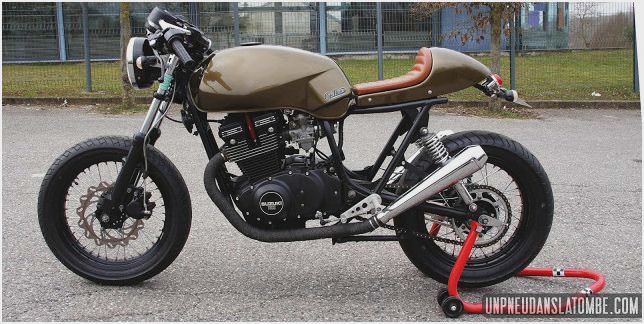
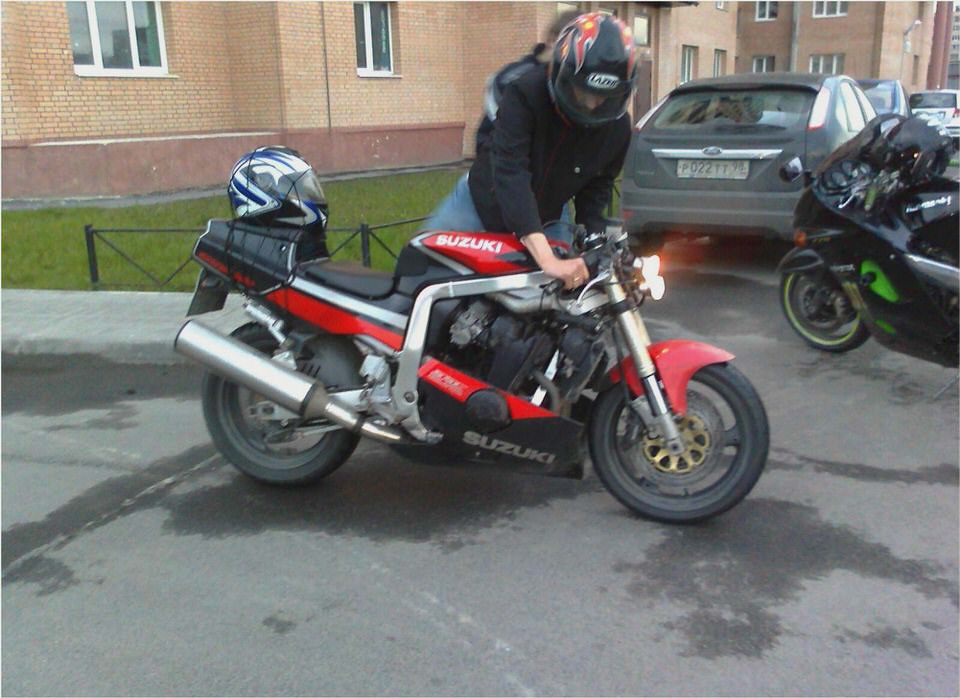
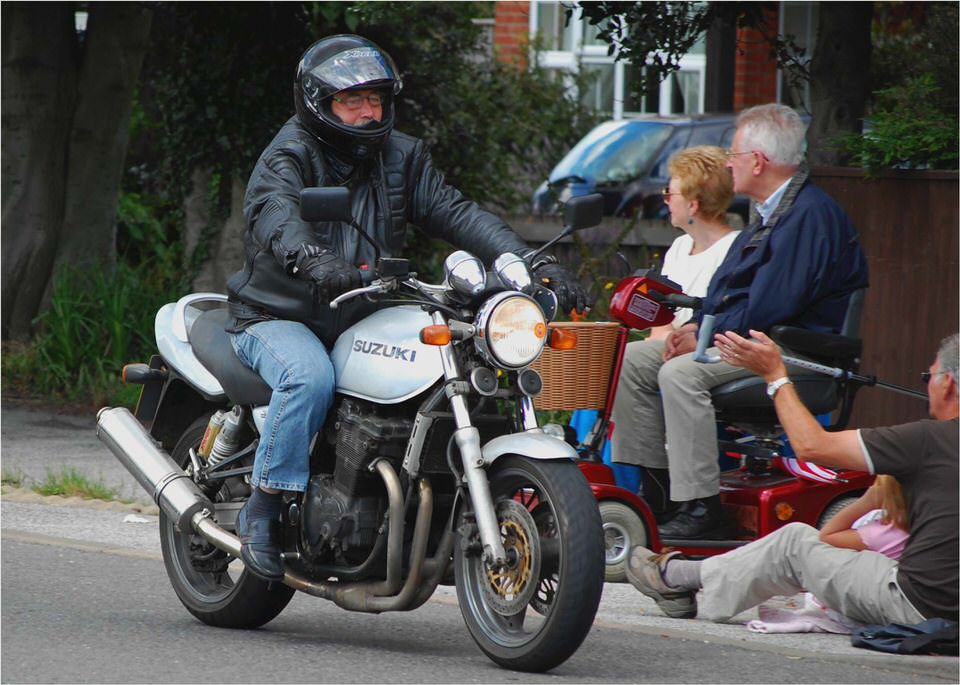

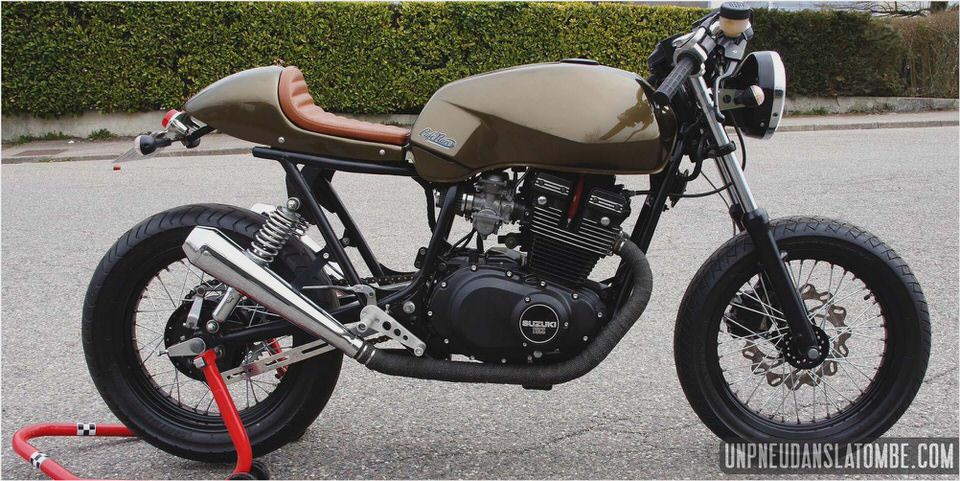


- First Ride: 2013 Suzuki GW250 Review – RideApart
- Suzuki GS 650GL-Suzuki
- 2007 Suzuki DR 650SE Reviews, Prices, and Specs
- 2009 BMW G 650 X Country motorcycle review @ Top Speed
- 2012 Suzuki RM-Z250 Review

